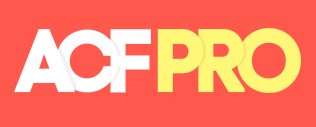Where to do what: thoughts on WordPress, Gutenberg and pagebuilders
There was a time that websites had a few pages and mainly attracted people by the blogposts a website owner/author offered. Those days passed away. Short term news moved away to social media. Websites are either just a ‘hello, here I am sign’, or they are very dedicated in handling business processes. Where does WordPress go? And where does that leave us?
No doubts about the fact that WordPress ‘owns’ about 30-35% of the market. Their engine controls the majority of most CMS’s. And yes, WordPress moved away from just being a ‘blogging tool’. With custom post types and custom fields, developers can build very dedicated business applications. With the arrival of pagebuilders, designers, developers and content creators can handle the complete chain from idea until content marketing and use of a website.
Where to do what?

In the time we had pages and posts, WordPress themes took care of the base of the design in so-called templates. Depending on the theme developer, various templates could be offered with or without sidebars, header and/or footer. The base of the design was in any way determined by the theme designer. And still many website builders and their customers make a choice of using free of paid premium ‘full featured’ themes, which offers ‘everything’ one could ever need or building a site.
The ‘old fashioned’ TinyMCE editor is still the base to create/edit content in the WordPress back-end
 Pagebuilders kind of disturbed this principle in both design and place where they do their job. With a pagebuilder anyone can make any design on every page and edit ‘it all’ on the front-end. That still is the big change, started a couple of years ago and is still going on. That happens without any influence of the people behind the WordPress core. Dedicated pagebuilder developers just make a small, fast basic theme and all the page creation functions are offered through a so-called pagebuilder plugin. And all of them offer a front-end wysiwyg ‘way of working’ by dragging and dropping content elements on any place you want on a page. Even the sidebar with its widgets may disappear. Full width page design give maximal flexibility in designing pages.
Pagebuilders kind of disturbed this principle in both design and place where they do their job. With a pagebuilder anyone can make any design on every page and edit ‘it all’ on the front-end. That still is the big change, started a couple of years ago and is still going on. That happens without any influence of the people behind the WordPress core. Dedicated pagebuilder developers just make a small, fast basic theme and all the page creation functions are offered through a so-called pagebuilder plugin. And all of them offer a front-end wysiwyg ‘way of working’ by dragging and dropping content elements on any place you want on a page. Even the sidebar with its widgets may disappear. Full width page design give maximal flexibility in designing pages.
In many cases pagebuilders also offer templates designs, to use for pages and/or posts. They act about the same way as ‘official’ WordPress templates fitting in the official WordPress eco systems, but they are (in most cases) a bit de-routed in their technical way, but most of us don’t care as long as the flexibility and speed gives designers the most of both.
PHP programming templates has been replaced by modern pagebuilders, dragging and dropping creates the template
Where does that leave the WordPress back-end editor?
Pagebuilders avoid the use of the back-end editor already. In most cases they try to let you do the work from the front-end. For end-users that means that they can edit their content in a wysiwyg way, without even thinking about a back-end editor.
Depending on the pagebuilder you use, you could ‘lock’ things for the content-editors. You could – for example – avoid dragging and dropping elements, changing colors, changing font types and sizes and many more design aspects. You could limit content-editors to just edit content for each element/block.
Is WordPress to late to act?
 With the arrival of WordPress new editor Gutenberg, we could say that at least ‘some’ confusion did hit the markt. We all just see the new editor, but Gutenberg seems to be just the beginning of a whole new structure of WordPress. Gutenberg must be the base of a whole new idea of templating and finally a new CMS content concept (referring to the use of custom post types and fields).
With the arrival of WordPress new editor Gutenberg, we could say that at least ‘some’ confusion did hit the markt. We all just see the new editor, but Gutenberg seems to be just the beginning of a whole new structure of WordPress. Gutenberg must be the base of a whole new idea of templating and finally a new CMS content concept (referring to the use of custom post types and fields).
Well, we have that already, many might say that. Yes, we have pagebuilders, we have tools for creating custom post types and fields and we have enough tools to let all those elements play together in any WordPress environment. But you have to make many choices, there are (too) many tools out there. Making WordPress just a CMS for any business applications is not that easy.
 The idea of simplifying templating, custom post types and custom fields is not a bad idea at all. In the early days of custom post types the technology was actually just created for plugin- and theme developers to avoid random table structures in the core WordPress database. Today plugins are on the market to develop custom web applications based on custom post types and connected fields. Even in a relational way, so that datastructures can be build in a way any other CMS could do that. WordPress called itself a CMS, growing away from just a blogging machine. But in fact they just offered some basic tools and let others build the needed user interfaces to work with it. It seems that WordPress wants to get more control in that process. But WordPress does not seem to have the marketing resources to make a clear roadmap for this approach. They ‘just’ started with Gutenberg, without telling the rest of the story. We just caught up the rest of that story piece by piece. The most complete version we found at Yoast.
The idea of simplifying templating, custom post types and custom fields is not a bad idea at all. In the early days of custom post types the technology was actually just created for plugin- and theme developers to avoid random table structures in the core WordPress database. Today plugins are on the market to develop custom web applications based on custom post types and connected fields. Even in a relational way, so that datastructures can be build in a way any other CMS could do that. WordPress called itself a CMS, growing away from just a blogging machine. But in fact they just offered some basic tools and let others build the needed user interfaces to work with it. It seems that WordPress wants to get more control in that process. But WordPress does not seem to have the marketing resources to make a clear roadmap for this approach. They ‘just’ started with Gutenberg, without telling the rest of the story. We just caught up the rest of that story piece by piece. The most complete version we found at Yoast.
Gutenberg is part of a bigger plan, but WordPress does not communicate that clearly
Where are we now?
Yes, you can for sure say that WordPress is slow and late. They just missed the impact of pagebuilders, which already offered a block oriented way of working at the fron-end. Who is waiting for a block oriented approach at the back-end? At least this is where the confusion begins. We don’t even start a discussion here about the UI/UX aspects of Gutenberg. We just look at the whole WordPress eco system and the future of it.
Could we skip the base editor? Both Advanced Custom Fields (pro) and Pods offer back-end block oriented content creation and editing. And various pagebuilders offer the power of creating front-end templates using custom post types and fields. The base text block is based on ‘good old’ TinyMCE editor.
A developer could make the decissions where users might edit there content. Database content in the back-end and just base content in the front-end.
Will WordPress take over this position?
Most likely their roadmap is too slow to act. It looks like they are on their own. But looking at the total market, database publishing and business apllications is just a very small part until now. Even the influence of pagebuilders is still small. We could guess that WordPress gives itself more time, just because most of the websites build with WordPress are still simple page/posts websites. And it seems that Gutenberg might just fit in smooothly for that group of users. They will just use the base block to make just text and place an image here and there. No problems to be expected……
And the rest of us? Well I think they don’t care too much about the niches we are in. They will slowly go their own way in creating a real CMS, which is fine, that is for sure. And who knows, Gutenberg might even hit the front-end one day.



